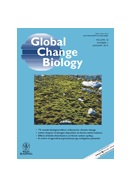Ver ítem
- xmlui.general.dspace_homeCentros Regionales y EEAsCentro Regional Patagonia SurEEA Santa CruzArtículos científicosxmlui.ArtifactBrowser.ItemViewer.trail
- Inicio
- Centros Regionales y EEAs
- Centro Regional Patagonia Sur
- EEA Santa Cruz
- Artículos científicos
- Ver ítem
Carbon (δ13C) and nitrogen (δ15N) stable isotope composition in plant and soil in Southern Patagonia’s native forests.
Resumen
Stable isotope natural abundance measurements integrate across several biogeochemical processes in ecosystem N and C dynamics. Here, we report trends in natural isotope abundance (d13C and d15N in plant and soil) along a climosequence of 33 Nothofagus forest stands located within Patagonia, Southern Argentina. We measured 28 different abiotic variables (both climatic variables and soil properties) to characterize environmental conditions at each of the 33
[ver mas...]
Stable isotope natural abundance measurements integrate across several biogeochemical processes in ecosystem N and C dynamics. Here, we report trends in natural isotope abundance (d13C and d15N in plant and soil) along a climosequence of 33 Nothofagus forest stands located within Patagonia, Southern Argentina. We measured 28 different abiotic variables (both climatic variables and soil properties) to characterize environmental conditions at each of the 33 sites. Foliar d13C values ranged from 35.4& to 27.7&, and correlated positively with foliar d15N values, ranging from 3.7& to 5.2&. Soil d13C and d15N values reflected the isotopic trends of the foliar tissues and ranged from 29.8& to 25.3&, and 4.8& to 6.4&, respectively, with no significant differences between Nothofagus species (Nothofagus pumilio, Nothofagus antarctica, Nothofagus betuloides). Principal component analysis and multiple regressions
suggested that mainly water availability variables (mean annual precipitation), but not soil properties, explained between 42% and 79% of the variations in foliar and soil d13C and d15N natural abundance, which declined with increased moisture supply. We conclude that a decline in water use efficiency at wetter sites promotes both the depletion of heavy C and N isotopes in soil and plant biomass. Soil d13C values were higher than those of the plant tissues and this difference increased as annual precipitation increased. No such differences were apparent when d15N values in soil and plant were compared, which indicates that climatic differences contributed more to the overall C balance than to the overall N balance in these forest ecosystems.
[Cerrar]

Autor
Peri, Pablo Luis;
Ladd, Brenton;
Pepper, David A.;
Bonser, Stephen P.;
Laffan, Shawn W.;
Amelung, Wulf;
Fecha
2012-01
Editorial
Wiley
ISSN
1365-2486
Formato
pdf
Tipo de documento
artículo
Palabras Claves
Derechos de acceso
Restringido
 Excepto donde se diga explicitamente, este item se publica bajo la siguiente descripción: Creative Commons Attribution-NonCommercial-ShareAlike 2.5 Unported (CC BY-NC-SA 2.5)
Excepto donde se diga explicitamente, este item se publica bajo la siguiente descripción: Creative Commons Attribution-NonCommercial-ShareAlike 2.5 Unported (CC BY-NC-SA 2.5)

